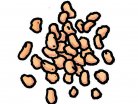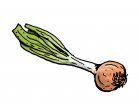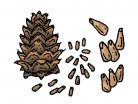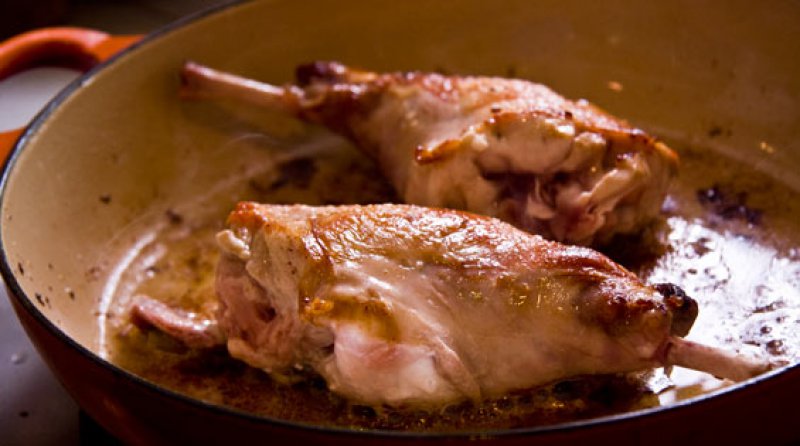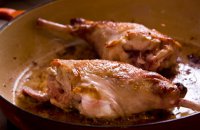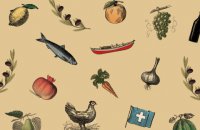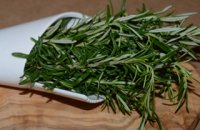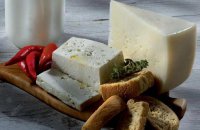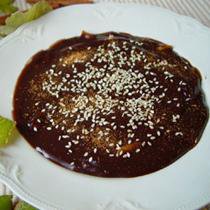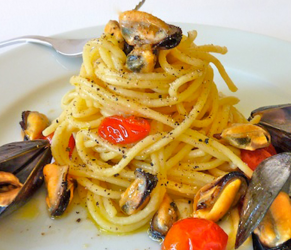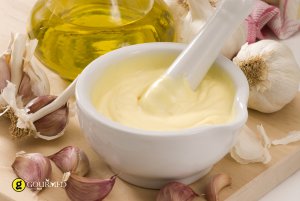The first time I visited France, I had finite means but an infinite appetite. I was an American student in Paris, eager, romantic, and determined to find the city of Hemingway and Fitzgerald. I vowed never to be seen with my face in a guidebook, oblivious to the beauty around me. I refused to don back-pack, or sneakers, or sweat shirts, or bright, down-filled parkas, or any of the other practical regalia of the ugly American abroad. I wanted desperately to be, or at least to look, French.
Of course I visited museums and churches. I whiled my time away at cafes, writing my post cards surreptitiously under the daily issue of Le Monde. But while my friends were discovering Bennetton and Harry's Bar and the happy hour at the American Legion, I was onto a different adventure. I counted centimes on the counters of cheese shops, yearning for as much of the reblochon as I could possibly afford. I meandered through every farmer's market. I ran my hands through mounds of wild mushrooms, at once afraid and curious. I was determined never to have a croque monsieur or one of those crepes sold at the stalls under Montmartre. Instead, I saved my money for the restaurants. For me back then eating out was a matter of going to one of the now all-but-gone working-class bistros, the kind of places where locals had a space carved in the wall to keep their own napkin. It was all I could afford, but I didn't mind. There, I feasted on the one dish whose name I could pronounce faultlessly, or so I wanted to believe, "gibelotte," or rabbit stewed in wine.
I no longer yearn to be Parisian, but I still hanker after rabbit. My tastes have changed, evolved, my repertoire of dishes for that most savory of meats vastly expanded from that first gibelotte. Rabbit started as a working man's dish in France, largely because after the animal was introduced there in the Middle Ages it acclimatized so well and reproduced with such ferocity that it began to eat up all the crops. (On average, wild rabbits have seven litters a year, and at most eight young per litter - a total of 56.) To protect the land and please the peasants, King Louis XVI gave permission for anyone to hunt it.
Its plebeian roots notwithstanding, to me rabbit is one of the most delicate meats, although hare is far superior. The two animals are actually quite different. Rabbits burrow in the ground, while hare makes forms in the grass. The hare genus is Lepus, and the rabbit genus Oryctolagus, and there are more variations among rabbits than among any other domesticated mammal except the dog. Almost all the rabbit found at market is the domesticated variety. Hare is still a trophy of the hunt. Feeding on thyme and rosemary and other wild herbs, the latter has a superb savor.
Rabbit flesh is often compared in texture and in taste to chicken. (It contains about twice as much fat as chicken and less than one-third that of beef.) It is, though, much more delicate, and because it is cooked (for obvious reasons) without its skin, its lean nature demands that the meat marinate long hours and cook slowly. The time involved in preparing it makes it seem like a festive dish. For me, rabbit is, indeed, the dish with which to fete, when the party is small. It was rabbit that I cooked for my friend Nico to celebrate the publication of a book, and rabbit that led me into the kitchen with a Cretan friend and chef named Christoforo, who taught me his version of Cretan rabbit stew.
In Greece, rabbit is usually prepared stewed in a sea of wine with pearl onions, or the Cretan way, with orange and cinnamon and tomato. In parts of the Peloponnisos and in Thessaly it is also braised and served with walnut and garlic sauce in a dish known as lagoto. It can be fried, stuffed, roasted, even pickled. In Mexico, rabbit is an ancient delicacy (the Aztecs actually had a rabbit god associated with the moon). There, it is seasoned with mole sauce, a classic Mexican sauce made with bitter chocolate. In France, another classic rabbit dish is lapin a la moutarde, or rabbit with mustard sauce. Italians season it with thyme and rosemary and serve it with papardelle, the bow-tie shaped pasta. In Belgium it is baked with beer and prunes. As the ancient chef Archestratus (according to Atheneus) himself declared, there are many ways and many laws for dressing it.
The Mediterranean's Rabbit Repertoire
Although regions throughout the Mediterranean enjoy rabbit as a delicacy, each area has its own repertoire of preparations for the dish.
Country:
Category:









































